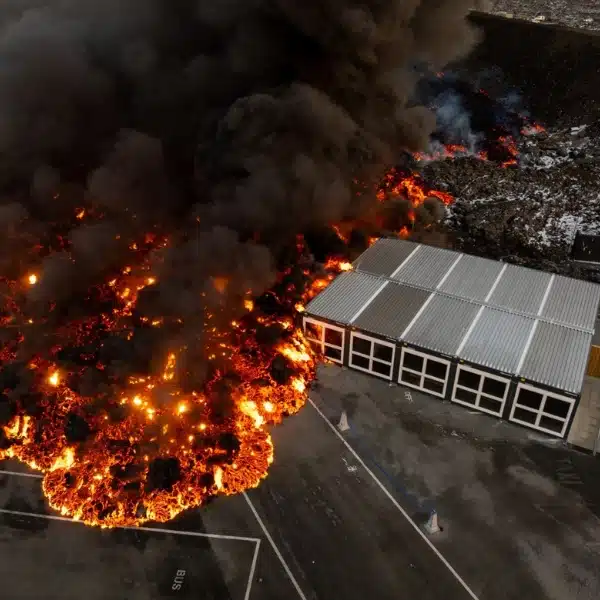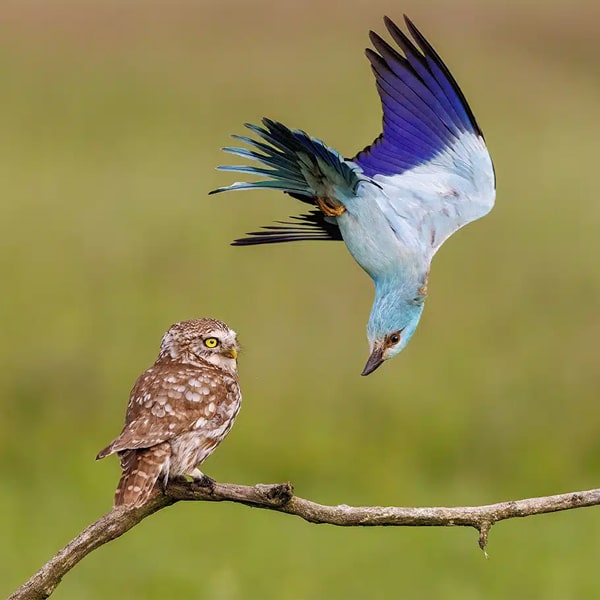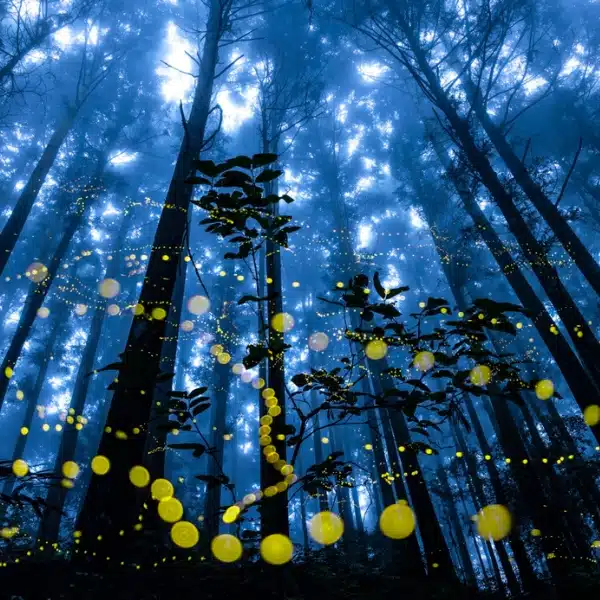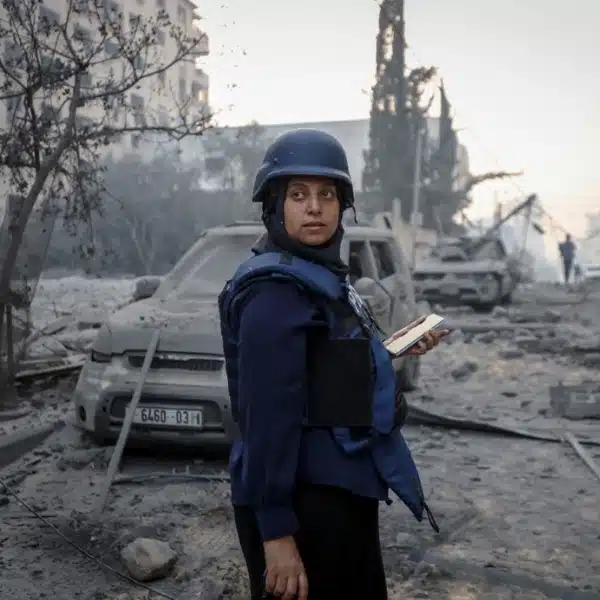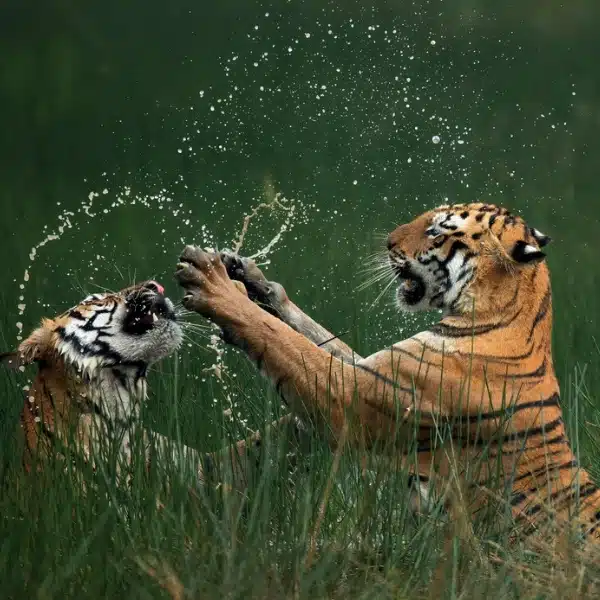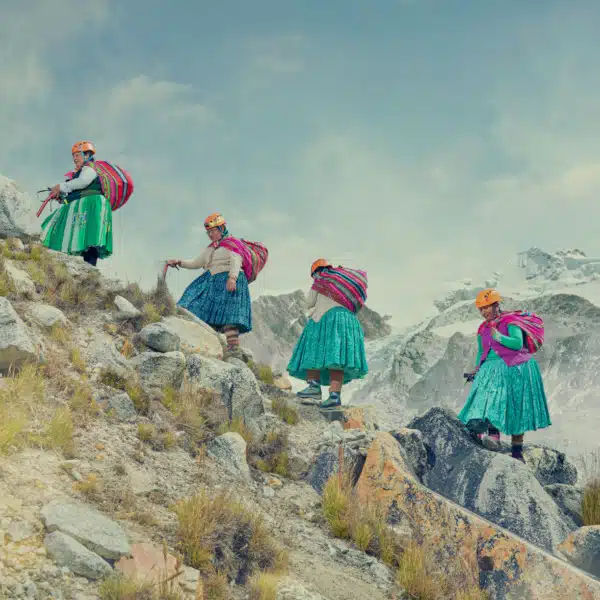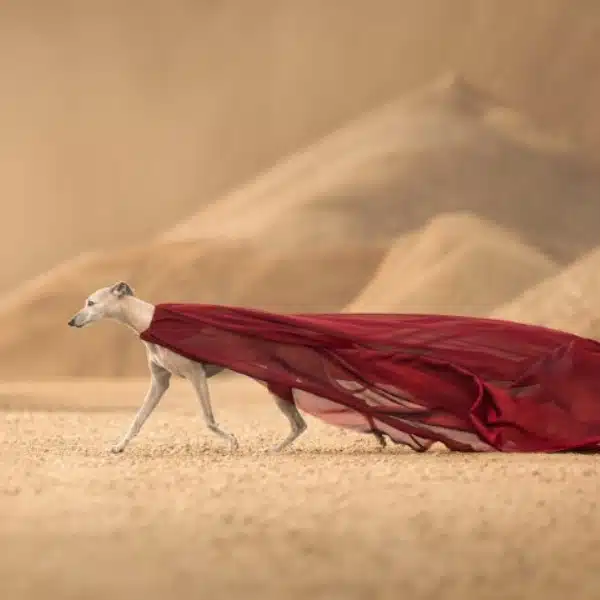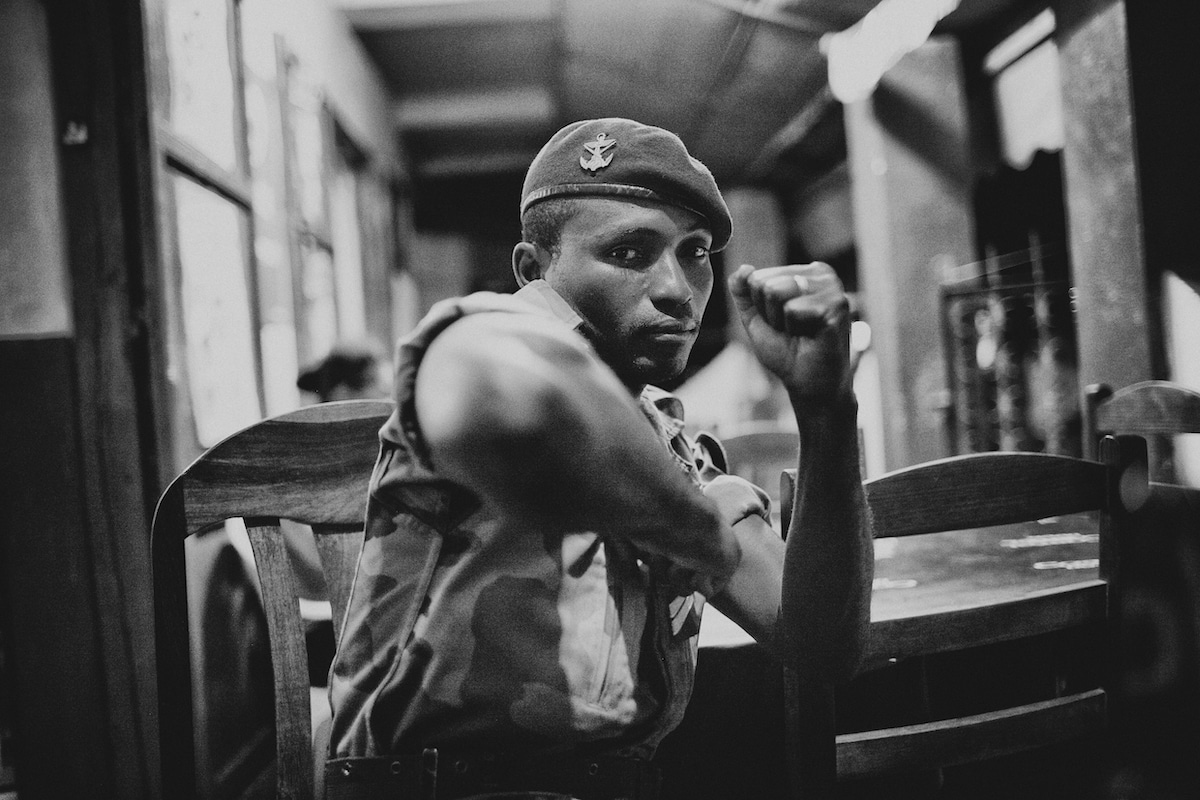
“The Zebu War” © Rijasolo, Riva Press. Winner, Africa, Long-Term Projects.
“For decades, the rural population of southern and western Madagascar have faced violence and the daily theft of their zebu, highly prized humped cattle, by groups of men called dahalo (which roughly translates as ‘bandits'). Zebu are used in dowry payments, rituals, and are much valued for their meat. Since the 1970s, mounting economic inequality and a food crisis exacerbated zebu theft and violence, with frequent deadly clashes between rural communities and groups of dahalo. Government intervention against zebu theft has been harsh, and in 2014, Amnesty International accused Malagasy security forces of indiscriminate acts of violence.
Sergeant Stéphane, a commander in the Regiment of Intervention Forces (RFI) takes a fighting pose in Betroka, southern Madagascar, on 20 February 2013. The RFI operates against cattle raiders in the Betroka region and the Andriry mountains. In June 2012, the government had launched ‘Operation Tandroka' in an offensive against cattle thieves in the region.”
Now in its 65th year, the World Press Photo Contest is a high point in the world of photojournalism. And in 2022, the contest has shifted its structure in a way that brings different creative voices to the forefront. Now working on a regional approach, World Press Photo is allowing more diversity to be showcased on its valuable platform. Judging from the regional winners of the 2022 contest, the decision is a welcome move and will allow the public to see more of the incredible photojournalistic talent that the world has the offer.
For the contest, the map was broken into six regions: Africa, Asia, Europe, North and Central America, South America, and Southeast Asia and Oceania. Entries were initially judged by a regional jury of experts who were better able to engage with the stories in their social, political, and cultural contexts. This shortlist was then turned over to the global jury, which judged the images entered into the Singles, Stories, Long-Term Projects, and Open Format categories. The winners are a stunning look at the state of the world as viewed through the eyes of the photographers who lived these stories.
By shifting to a regional outlook, we're no longer focused on the European and North American stories that often dominate these awards. Instead, all regions are given equal footing to share the visuals that document important events in these areas of the world.
“The new contest model pushed us out of our comfort zone to think outside the box,” shared global jury chair, Azerbaijani photographer Rena Effendi. “Each jury member brought along their expertise on relevant issues of their respective regions, and we built on this knowledge as a team. The resulting selection of winners reflects upon the state of the world from a deeper and more nuanced vantage point.”
In addition to a monetary prize, the winners will be included in the annual worldwide exhibition and the annual yearbook. These winners are just a preview of what's the come when the global winners are announced in early April.
In an effort to encourage more diversity, the World Press Photo Contest has awarded regional winners.
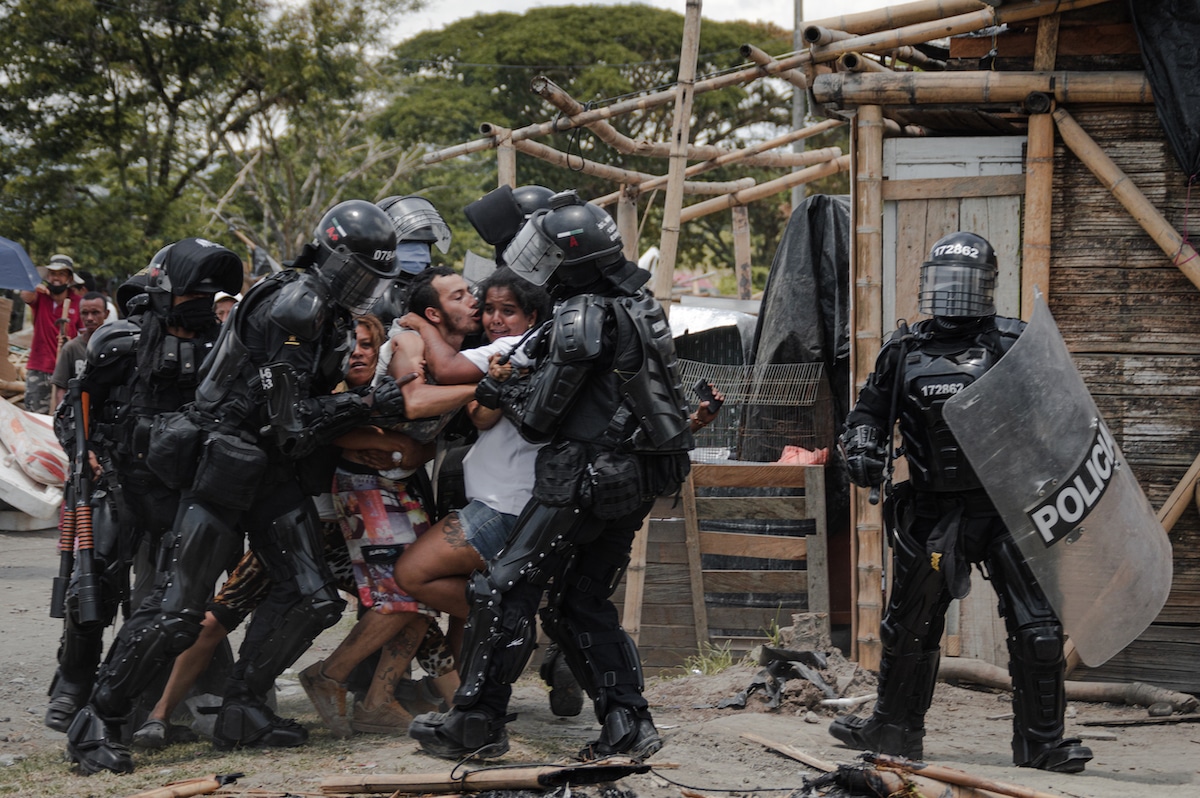
“San Isidro Settlement Eviction” © Vladimir Encina. Winner, South America, Singles.
“Police agents arrest a man while his wife and family resist, during evictions of people from the San Isidro settlement, in Puerto Caldas, Risaralda, Colombia, on 6 March 2021.
Evictions of residents of the San Isidro settlement began on 3 March 2021, ahead of the construction of a railroad planned to connect the capital of the Risaralda district with Buenaventura, Colombia’s main Pacific seaport. Authorities said the railroad megaproject would bring work and investment to the area, and that the ground did not officially belong to the people being evicted.”
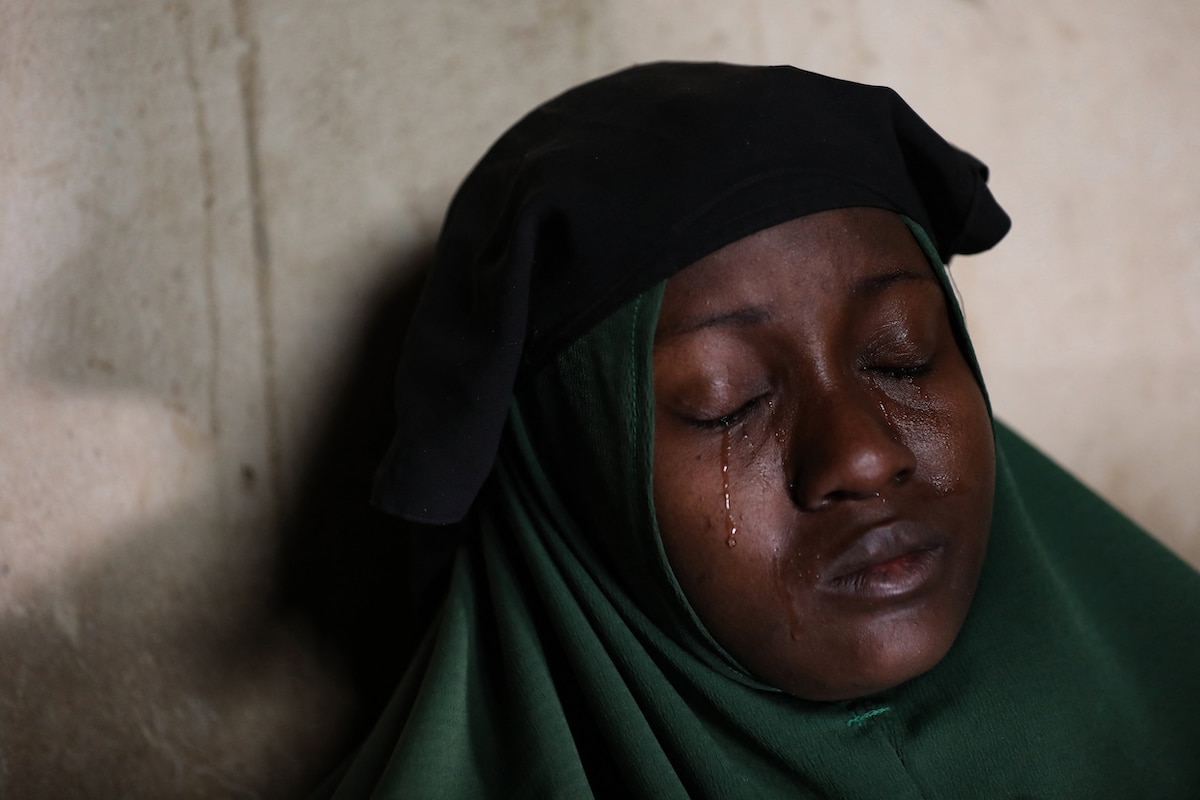
“Afraid to go to School” © Sodiq Adelakun Adekola, Agence-France Presse. Winner, Africa, Stories.
“Aminah Labaran (not her real name) cries at home, in Jangebe, Zamfara State, northwest Nigeria, on 27 February 2021, the day after her two daughters were abducted. Gunmen, apparently from a bandit group, snatched 279 girls from dormitories in the middle of the night, at the Government Girls Secondary School in the village.
Kidnappings of students by Islamist groups and armed gangs continue to impact schools in Nigeria. These groups kidnap students to oppose Western secularism, to gain quick cash through ransoms, or to bargain for the release of imprisoned Boko Haram members.”
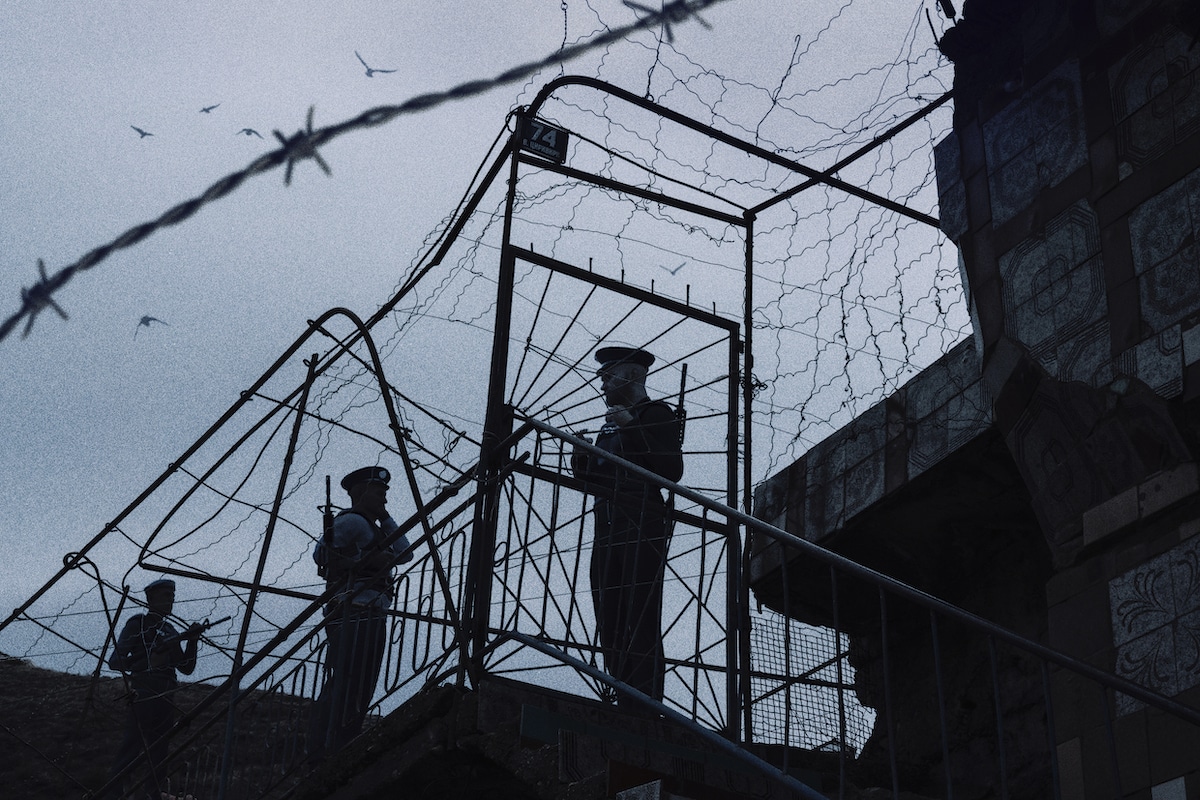
“The Book of Veles” © Jonas Bendiksen. Winner, Europe, Open Format.
“All the images in this series are manipulated and partially computer generated, with a completion date of February 2021.
Armed police stand guard on the outskirts of Veles. (fictional caption).
‘The Book of Veles' is a photographic exploration of the phenomena of fake news and synthetic information. The book was published in April 2021, appearing to be an ordinary documentary photo book about the town of Veles in North Macedonia. The town placed itself on the world map in 2016 as an epicenter for the production of fake news, when local youth set up hundreds of news websites that pretended to be American news portals. These sites, with names such as NewYorkTimesPolitics.com, spread to millions of people through Facebook and Twitter’s algorithms. While the goal of the sites’ creators was simply to earn money through banner ads, they could also have inadvertently have had a real impact on the election of Donald Trump. The book also weaves in a story about a mischievous pre-Christian pagan bear-god called Veles and the 1919 ‘discovery’ of a forged ‘ancient’ manuscript called the Book of Veles.
After my book had been sold for half a year, had been shared on my social media channels, and had even been screened at a photojournalism festival, I revealed (through a fake social media profile) that the whole photographic project itself was a forgery: All the people pictured in the book are in fact computer-generated 3D models which I posed and inserted into empty background tableaus from Veles. Many of the animals and important objects in the series were also non-camera-based renderings. The text in the book was written by an AI machine learning system called GPT-2. In essence, Book of Veles is a fake story about real people who made fake news. However, before I myself revealed the truth behind the project, nobody in the industry posed any questions about the material—on the contrary, it was well received and applauded as a traditional piece of photojournalism.”
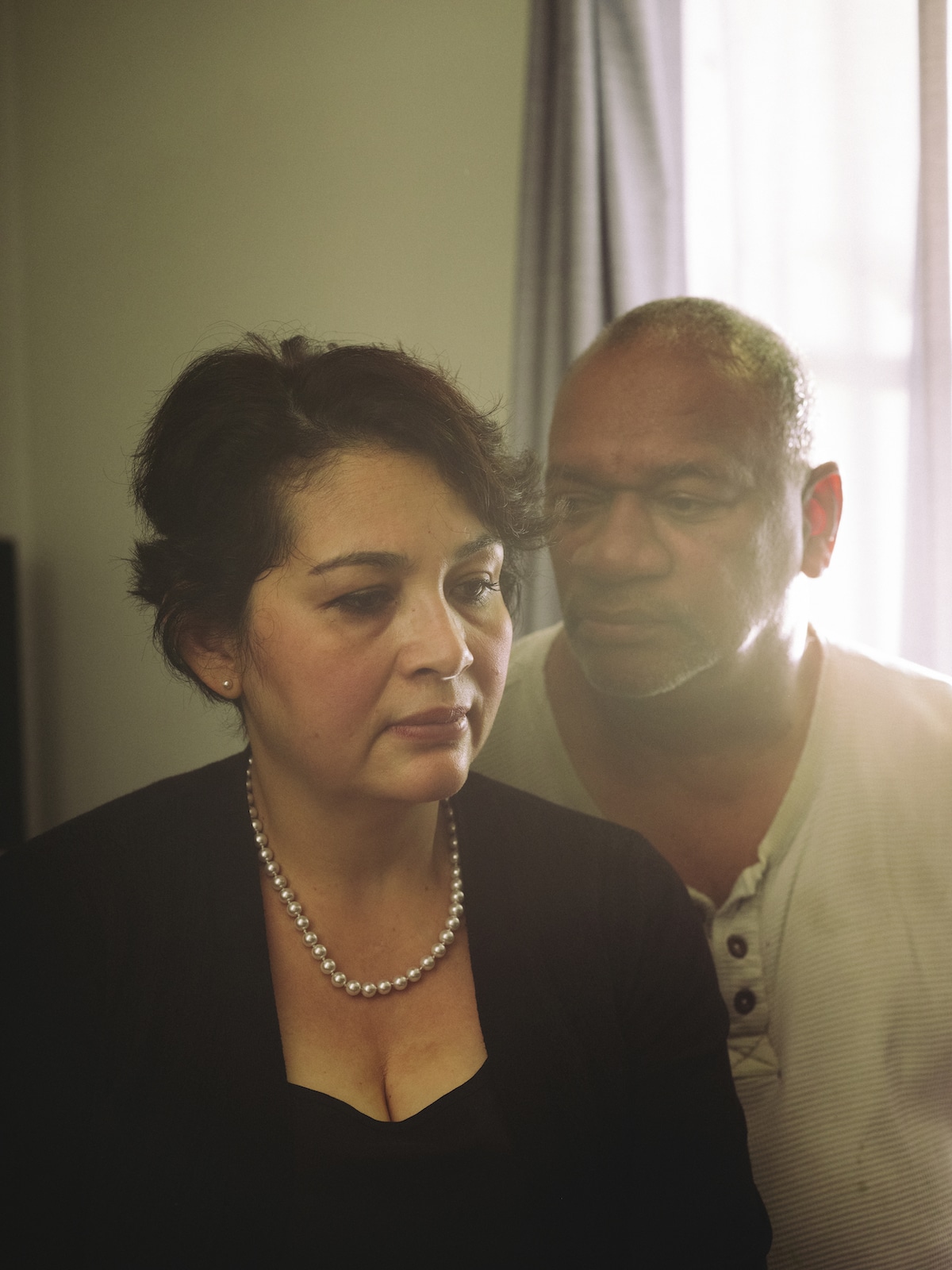
“The People Who Feed the United States” © Ismail Ferdous, Agence VU. Winner, North and Central America, Stories.
“Sandra Sibert sits with her husband, James, in the room where she had to stay in isolation with COVID-19, in Sioux Falls, South Dakota, USA, on 7 September 2020. The couple met while working at a meatpacking plant. Sandra has worked at the plant for 15 years. She fell ill on 7 April 2020, and was sick for three weeks.
The stories of migrants working in the US meatpacking industry shed light on the lives many migrants lead once they reach their destination. Nationally, immigrants make up 37 percent of the meat industry labor force. During the COVID-19 pandemic, meatpacking plants remained open as they were considered critical infrastructure. The coronavirus spread quickly in an industry where workers operated in close proximity to each other. A study by the US-based Environmental Working Group found that counties with or near meatpacking industries reported twice the national average rate of COVID-19 infection.”
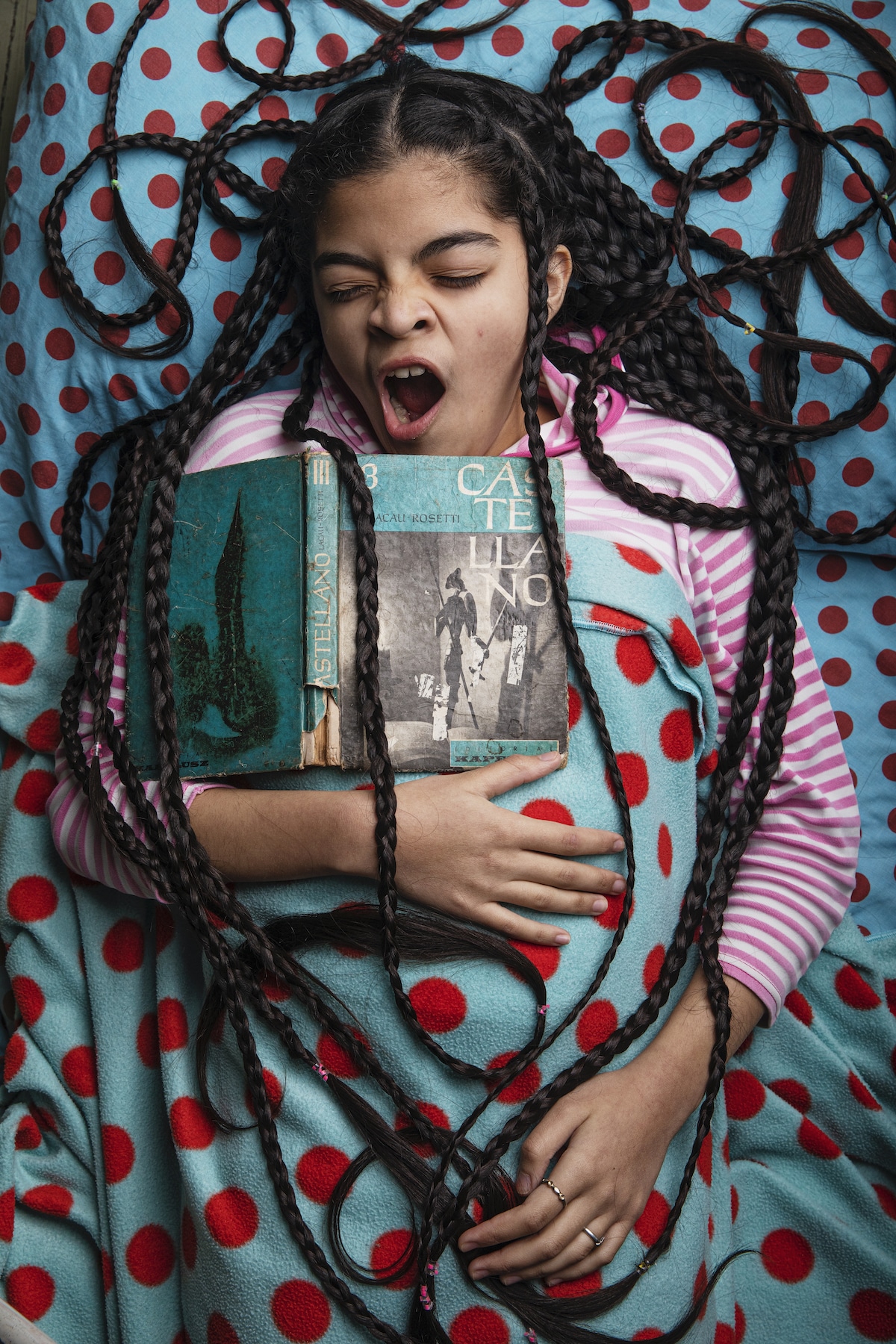
“The Promise” © Irina Werning, Pulitzer Center. Winner, South America, Long-Term Projects.
“In August 2020, Antonella (12), who lives in Buenos Aires, Argentina, vowed to cut her long hair only when she could resume in-person classes at school, which had been suspended as a result of the COVID-19 pandemic. Antonella said she was offering up her most precious treasure in exchange for getting her school life back. Her hair was her identity. She said: “When I finally go back to school they will know I’m a different person, I feel like a different person.” She cut her hair on 25 September 2021, on the weekend before she returned to classes.”
By breaking the world into six regions, the contest is allowing more incredible photojournalists to showcase their work.
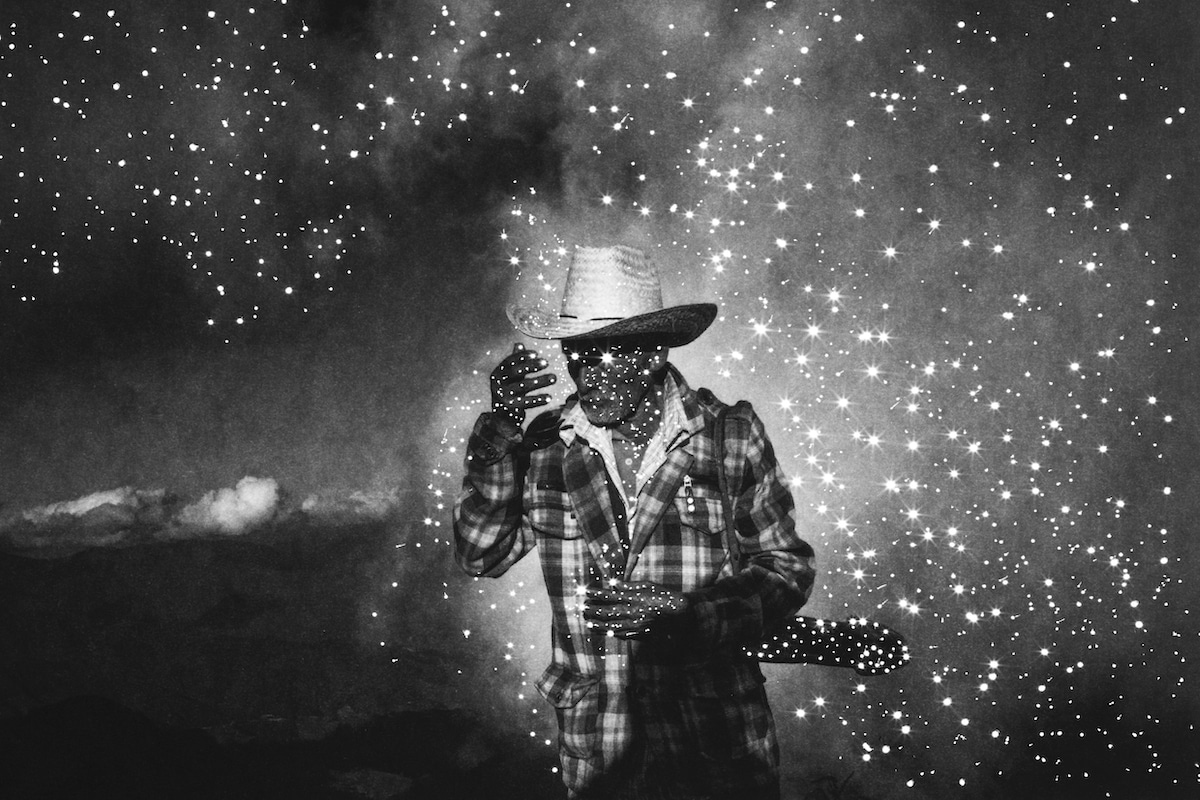
“The Flower of Time: Guerrero’s Red Mountain” © Yael Martínez, Magnum Photos. Winner, North and Central America, Open Format.
“Mexico is the third-largest opium producer in the world, with half of the production being grown in its second-poorest state, Guerrero. The drug economy has transformed the social structure of the largely Indigenous farming communities which have turned to poppy cultivation as a means of survival. The photographer put scratches and pinpricks into prints of the photographs to represent trauma and the scratching of the poppy flower during opium extraction, while the color red represents drug violence and blood, but also life.”
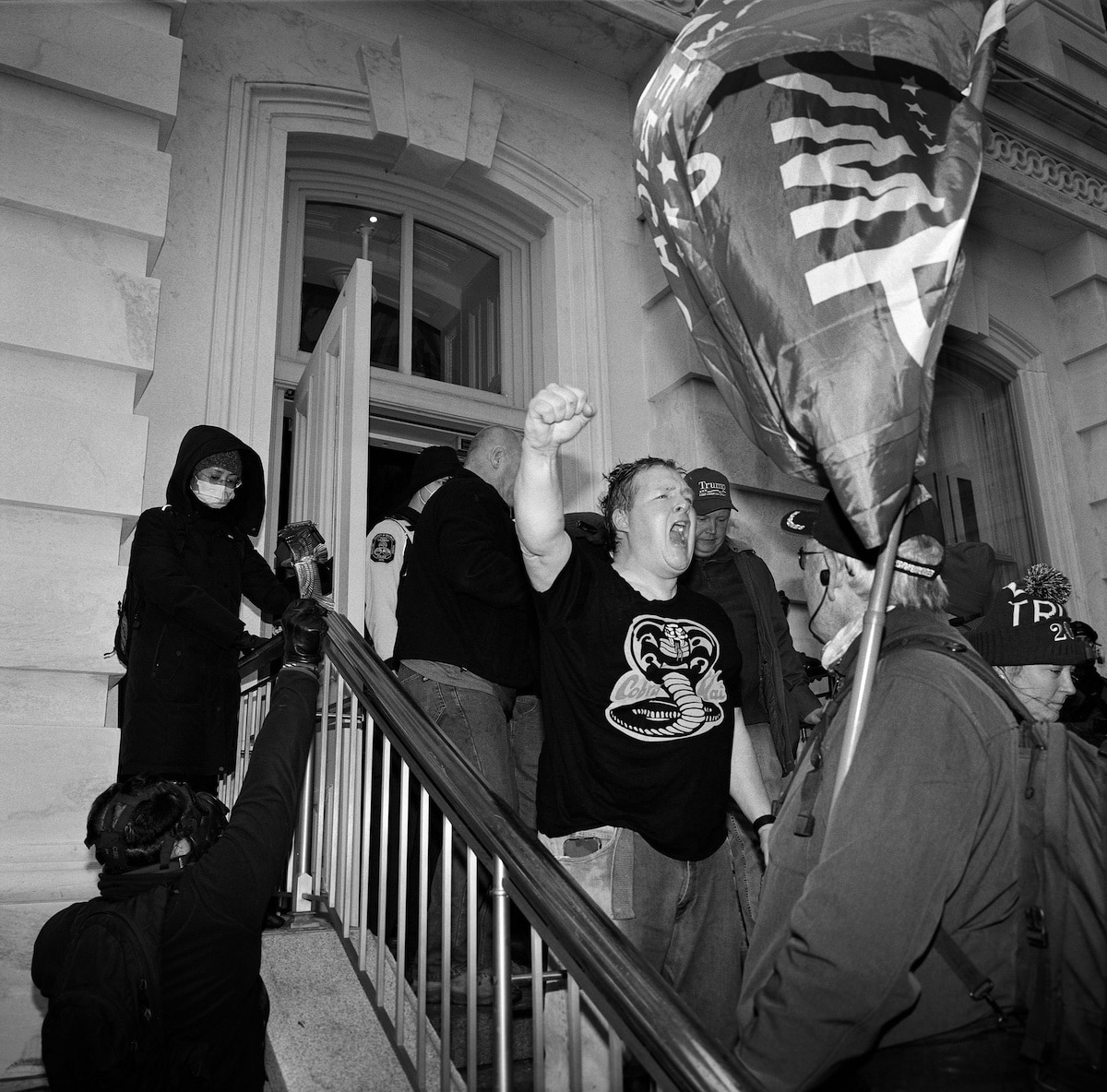
“Political Year Zero” © Louie Palu. Winner, North and Central America, Long-Term Projects.
“A Trump supporter pumps his fist as he is ejected from the Capitol Building, after it had been breached by rioters in an attempt to stop the certification of the 2020 presidential election, Washington DC, USA, 6 January 2021.
The final year of Donald Trump’s presidency of the United States saw increasing polarization in the country, growing social unrest, and disinformation in the media. From early in the run-up to the 2020 US election, President Trump began to falsely accuse Democrat candidates of judicial and electoral subversion. Unrest among his supporters grew into insurrection, culminating in a 6 January attack on the United States Capitol Building in Washington DC. Later in January, Trump was impeached for a second time and charged with incitement to insurrection, later to be acquitted again by the Senate.”
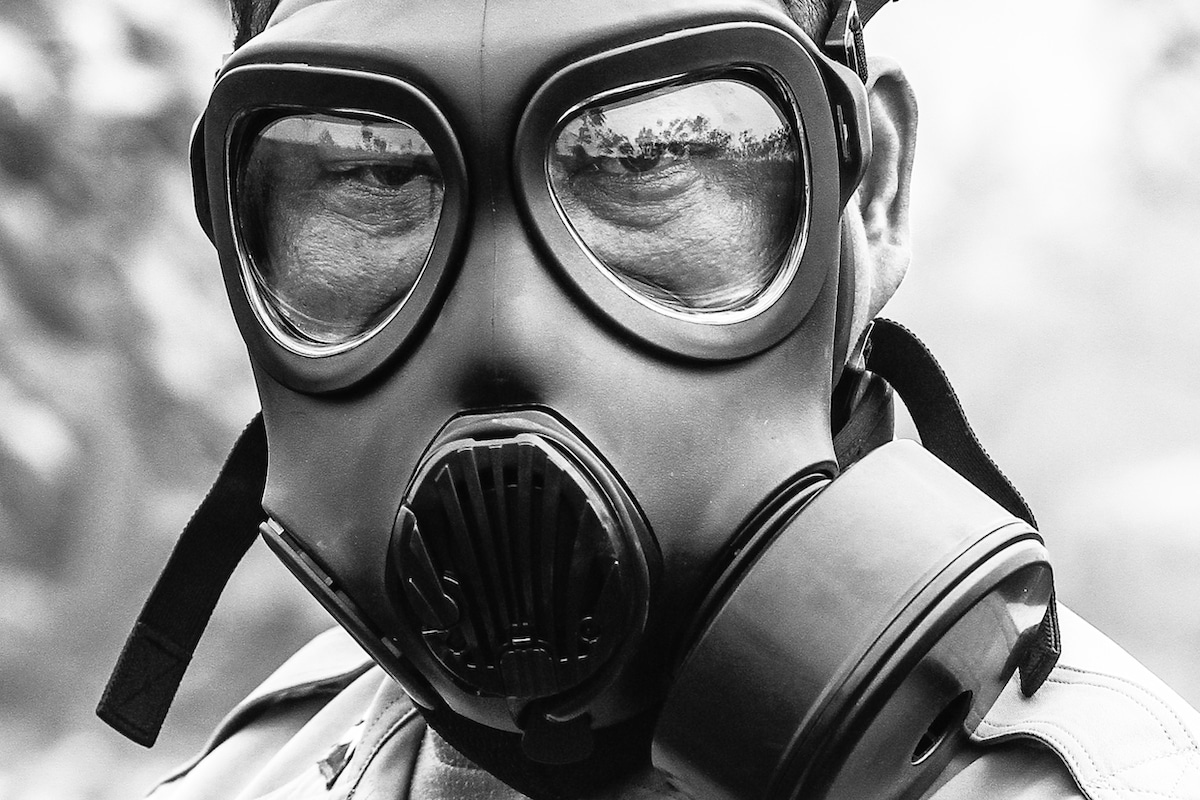
“Haze” © Abriansyah Liberto. Winner, Southeast Asia and Oceania, Long-Term Projects.
“A police officer wears a gas mask as protection against smoke from a peatland fire in Ogan Komering Ilir, South Sumatra, Indonesia, on 11 September 2015.
Indonesia has seen exceptionally large wildfires in recent years. Haze created by fire can affect human health, especially as it carries fine particulate matter, which can penetrate deep into the lungs. Dry conditions make it easier for fires to be set to clear land for agriculture, but also more likely that they spread out of control. Indonesia is the world’s largest producer of palm oil and industrial-scale land clearance has increased the risk of wildfire immensely. The country has lost around a quarter of its forest area since the beginning of data collection in 1990.”
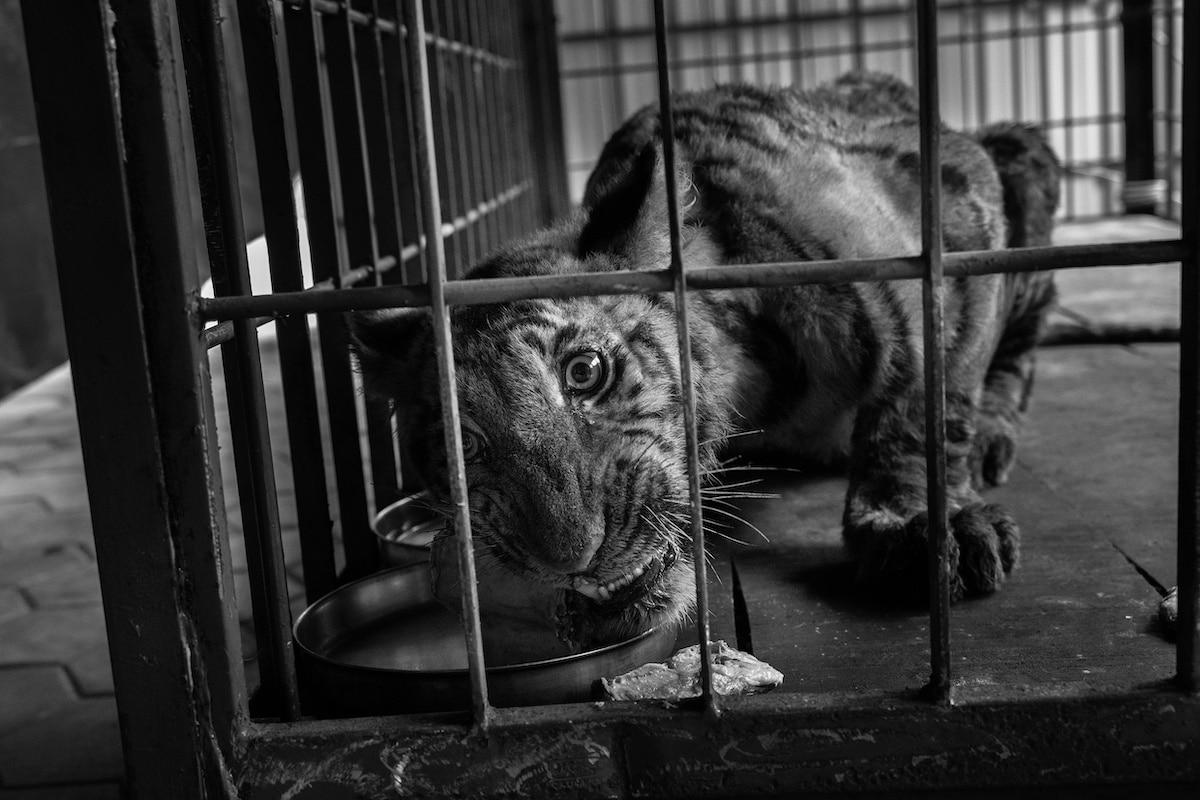
“Boundaries: Human-Tiger Conflict” © Senthil Kumaran. Winner, Asia, Long-Term Projects.
“In India, Bengal tigers (Panthera tigris tigris) are considered endangered, with up to 3,000 surviving in the wild. Human settlement, cultivation, and urban development are encroaching on tigers’ natural habitat and reducing their prey base. Villages on the perimeters of tiger sanctuaries and reserves are often home to Indigenous communities, who depend on livestock, farming, or the forest for their livelihoods. Conflict arises when tigers kill livestock and occasionally humans, which although rare, usually occurs when angry groups surround tigers who have entered settlements.”
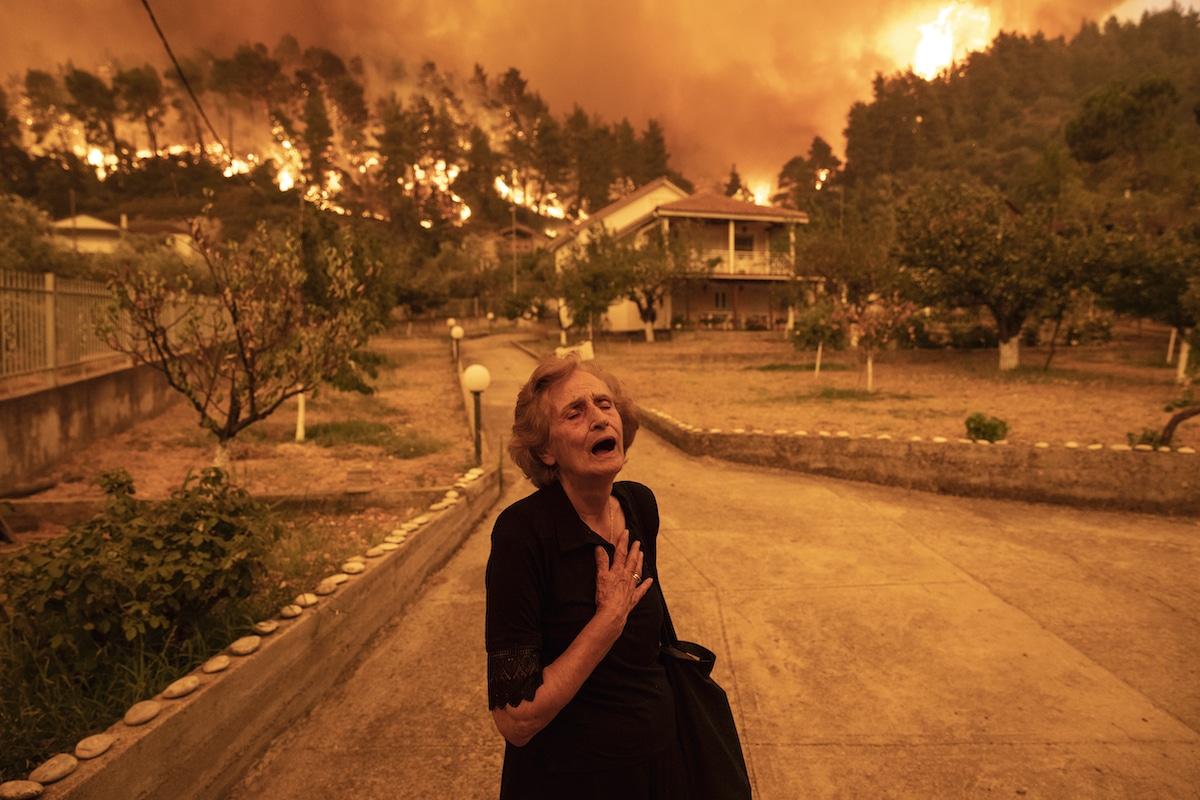
“Evia Island Wildfire” © Konstantinos Tsakalidis, for Bloomberg News. Winner, Europe, Singles.
“Panayiota Kritsiopi cries out as a wildfire approaches her house in the village of Gouves, on the island of Evia, Greece, on 8 August 2021.
Wildfires broke out on Evia – Greece’s largest island after Crete – in July and August, following the hottest weather Greece had experienced in 30 years. The megafire took almost two weeks to bring under control. Local reports pointed to global heating and other contributing factors, such as rural depopulation, budget cuts in the fire brigade, and changes in fire management strategies. Kritsiopi is quoted as saying: “At that moment I was shouting not only for myself. For the whole village.” In the end, her home remained intact.”
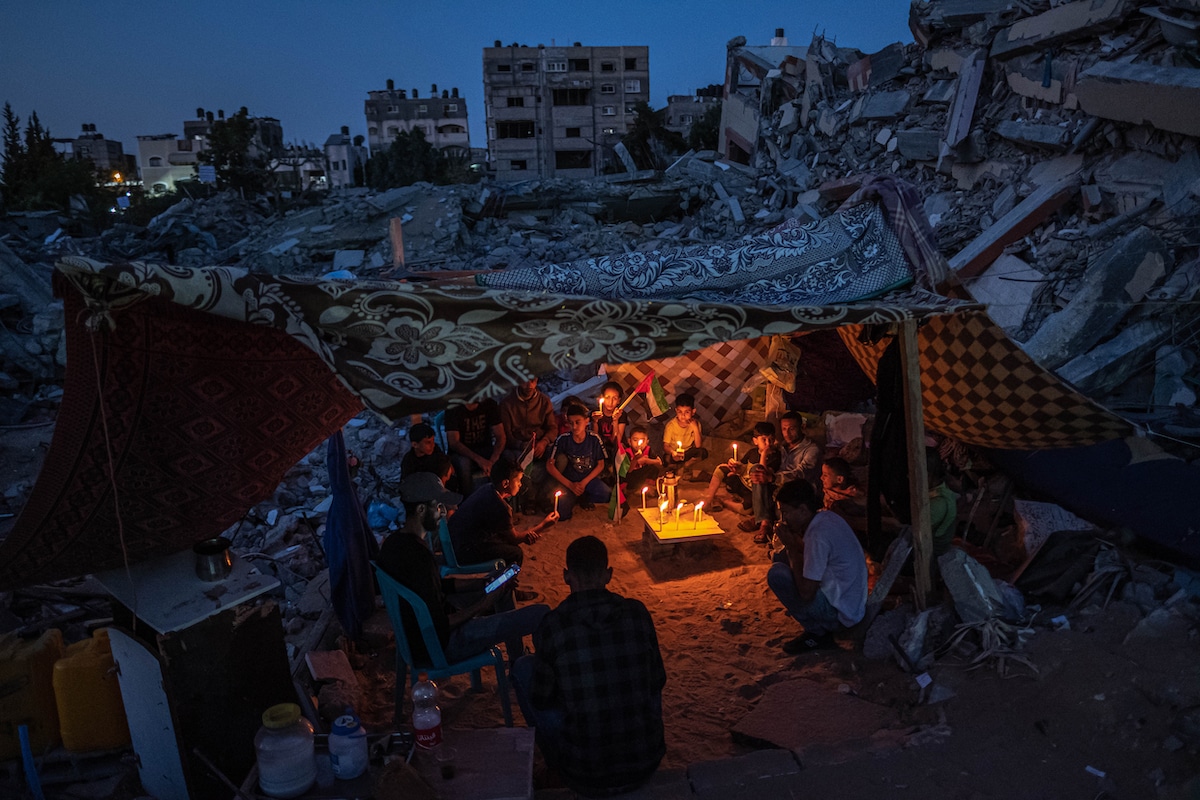
“Palestinian Children in Gaza” © Fatima Shbair, Getty Images. Winner, Asia, Singles.
“Palestinian children gather with candles during a fragile ceasefire in Beit Lahia, Gaza, Palestine, on 25 May 2021, after a protest by children in the neighborhood against attacks on Gaza.”
Entries were culled by a regional panel of experts before final judging by the global jury.
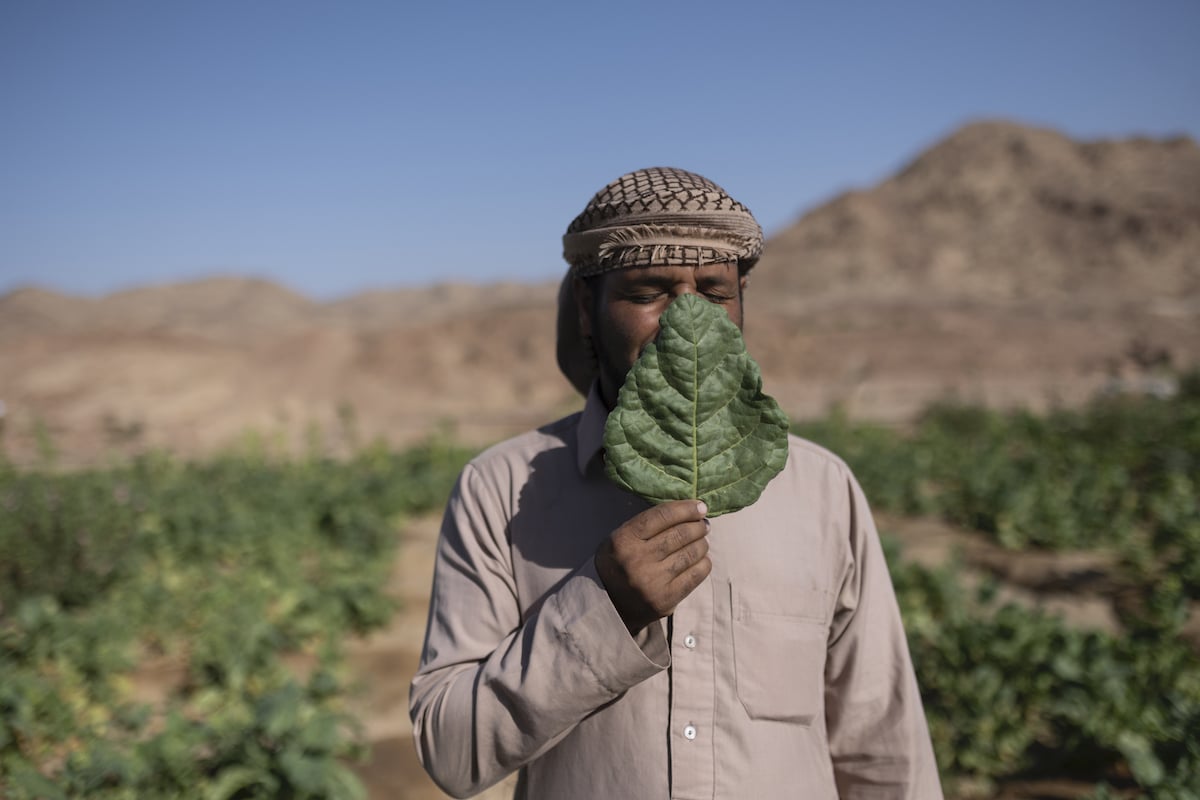
“The Longing of the Stranger Whose Path Has Been Broken” © Rehab Eldalil. Winner, Africa, Open Format.
“Seliman manages an eco-lodge in the valley with his cousins. Because of COVID-19 the eco-lodge had fewer guests, so Seliman redirected his focus on the family garden.
Bedouins have inhabited the Sinai peninsula for centuries and have long faced discrimination. They are still perceived as having been collaborators during the Israeli occupation of the Sinai from 1967 to 1982, when the Bedouins remained to protect their land. Bedouin women have also been misrepresented and stereotyped in Egyptian media. Challenging these stereotypes in the project, portraits of women from the community, printed on fabric, were embroidered by the women themselves, and men from the community contributed with handwritten poetry. The photographer is an activist and has been an active member of the community for the past 15 years.”
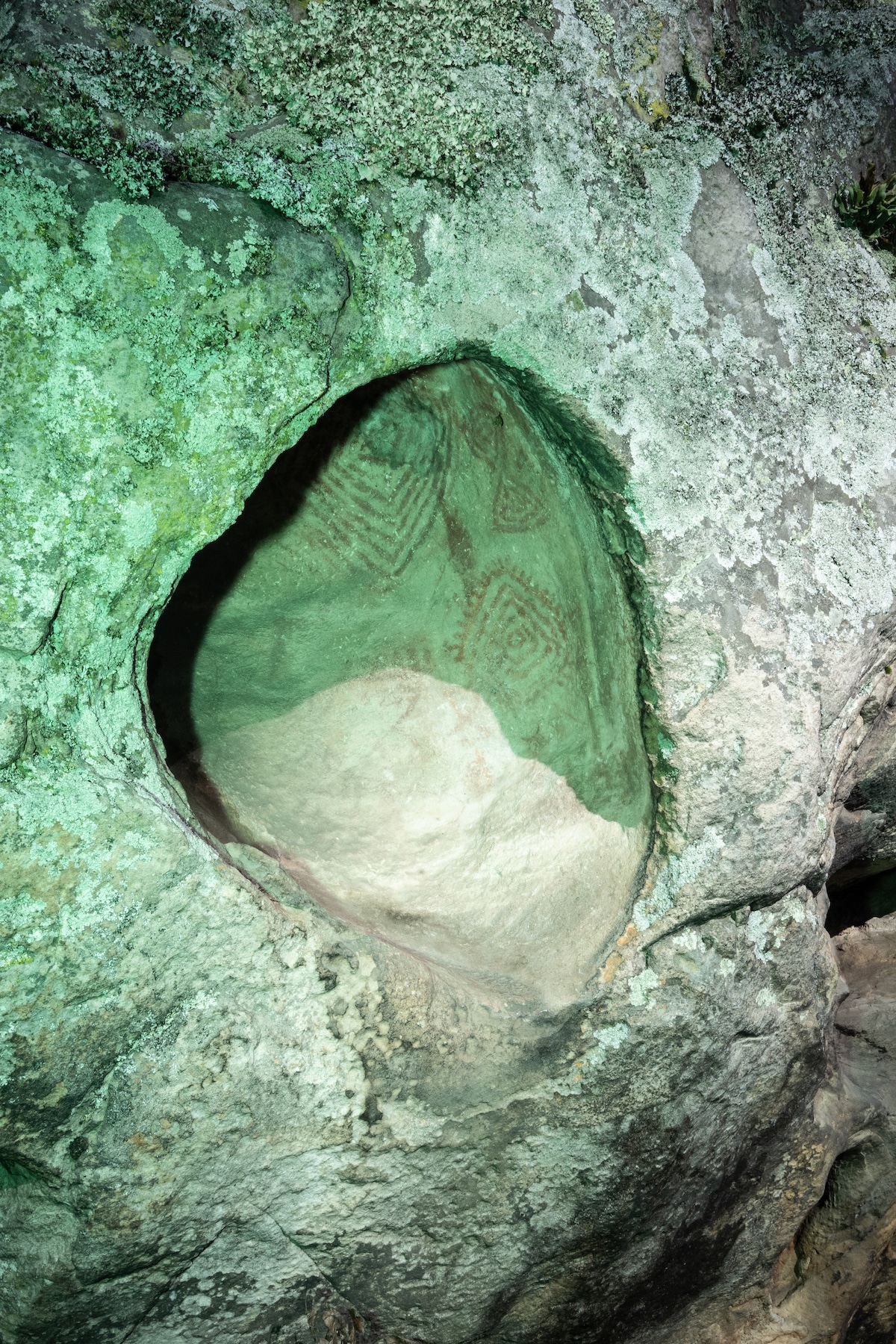
“Blood is a Seed” © Isadora Romero. Winner, South America, Open Format.
“Blood is a Seed (La Sangre Es Una Semilla) questions the disappearance of seeds, forced migration, colonization, and the subsequent loss of ancestral knowledge. The video is composed of digital and film photographs, some of which were taken on expired 35mm film and later drawn on by Romero’s father. In a journey to their ancestral village of Une, Cundinamarca, Colombia, Romero explores forgotten memories of the land and crops and learns about her grandfather and great-grandmother who were ‘seed guardians' and cultivated several potato varieties, only two of which still mainly exist.”
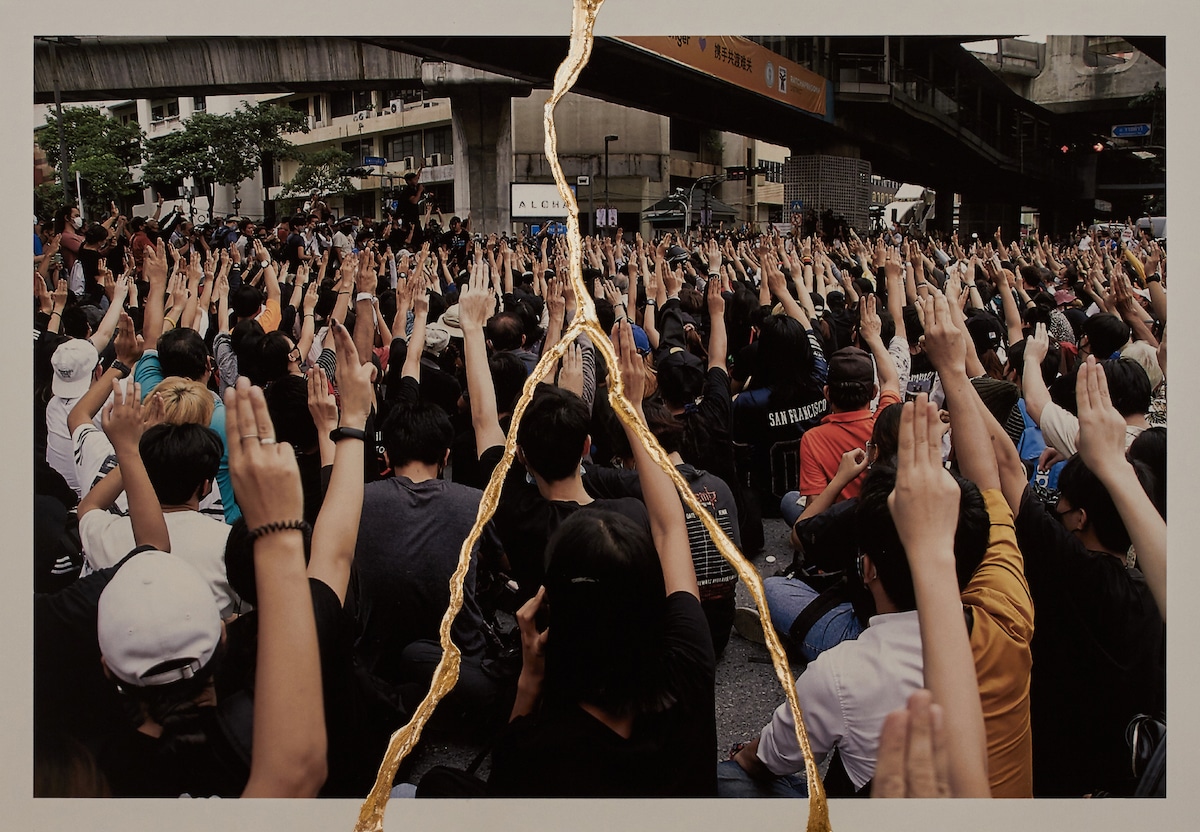
“The Will to Remember” © Charinthorn Rachurutchata. Winner, Southeast Asia and Oceania, Open Format.
“The project juxtaposes archival images of the 6 October 1976 massacre of students at Bangkok’s Thammasat University with photographs Rachurutchata took during the 2020-2022 Thai protests, in order to understand the root causes of the present-day protests. The photographer emulates the Japanese art of kintsugi by tearing photographs, then mending them with lacquer and powdered gold. Rachurutchata uses the kintsugi to symbolize the transformation of trauma into hope for a better future.”
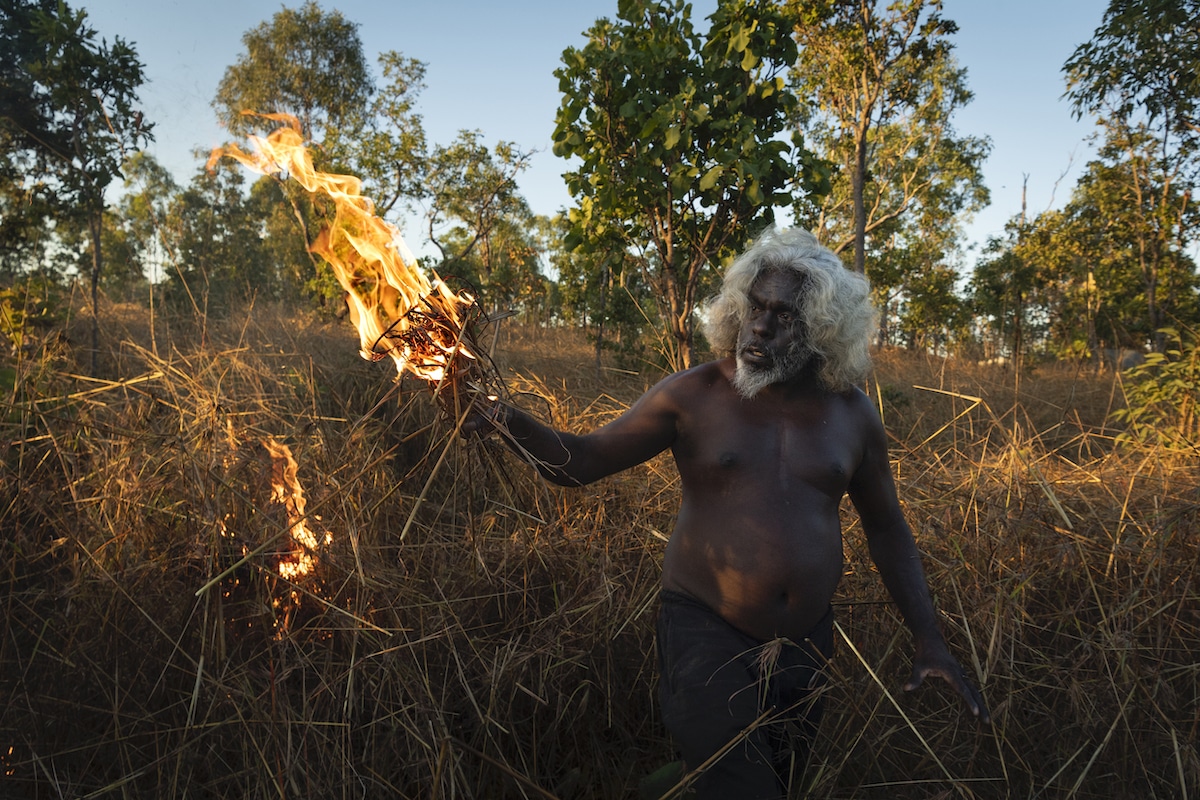
“Saving Forests with Fire” © Matthew Abbott, for National Geographic/Panos Pictures. Winner, Southeast Asia and Oceania, Stories.
“Indigenous Australians strategically burn land in a practice known as cool burning, in which fires move slowly, burn only the undergrowth, and remove the build-up of fuel that feeds bigger blazes. The Nawarddeken people of West Arnhem Land, Australia, have been practicing controlled cool burns for tens of thousands of years and see fire as a tool to manage their 1.39 million hectare homeland. Warddeken rangers combine traditional knowledge with contemporary technologies to prevent wildfires, thereby decreasing climate-heating CO2.”
“It is exhilarating to see the way in which the new regional contest set up is producing the changes that we were hoping for,” says World Press Photo Foundation's Joumana El Zein Khoury.
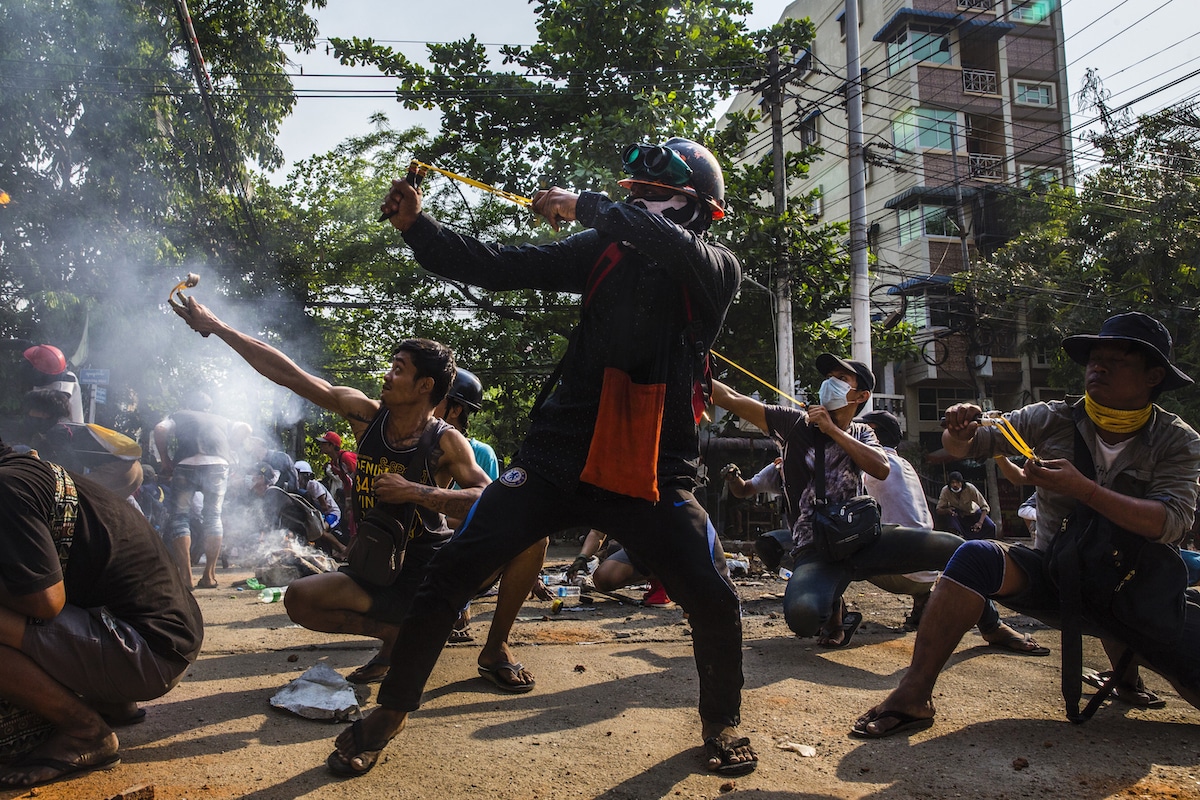
“Slingshots” © Anonymous, for The New York Times. Winner, Southeast Asia and Oceania, Singles.
“Protesters use slingshots and other homemade weapons in a clash with security forces in Yangon, Myanmar.
On 1 February 2021, military leaders staged a coup in Myanmar, hours before a newly elected parliament was to have been sworn in. Huge protests erupted nationwide, and were met with a harsh military crackdown. International media organizations and a UN official reported that the military were firing live ammunition at civilian protesters and into people’s homes. The photographer remains anonymous for reasons of personal safety. The day before this photograph was taken saw 114 civilians reported killed.”

“Ukraine Crisis” © Guillaume Herbaut, Agence VU. Winner, Europe, Long-Term Projects.
“Photographed over 2013-2021, this project looks at the longer-term context leading to the 2022 war in Ukraine. Tensions between the east and west of Ukraine were exacerbated in 2014 when Kremlin-backed forces occupied the Crimean peninsula and separatists in the eastern regions of Donetsk and Luhansk established self-proclaimed people’s republics, a status not officially recognized by most of the international community.
Women make camouflage gear for snipers, at the Novy Mariupol Center, an organization that collects equipment for Ukrainian soldiers, in Mariupol, Ukraine, on 26 September 2014.”
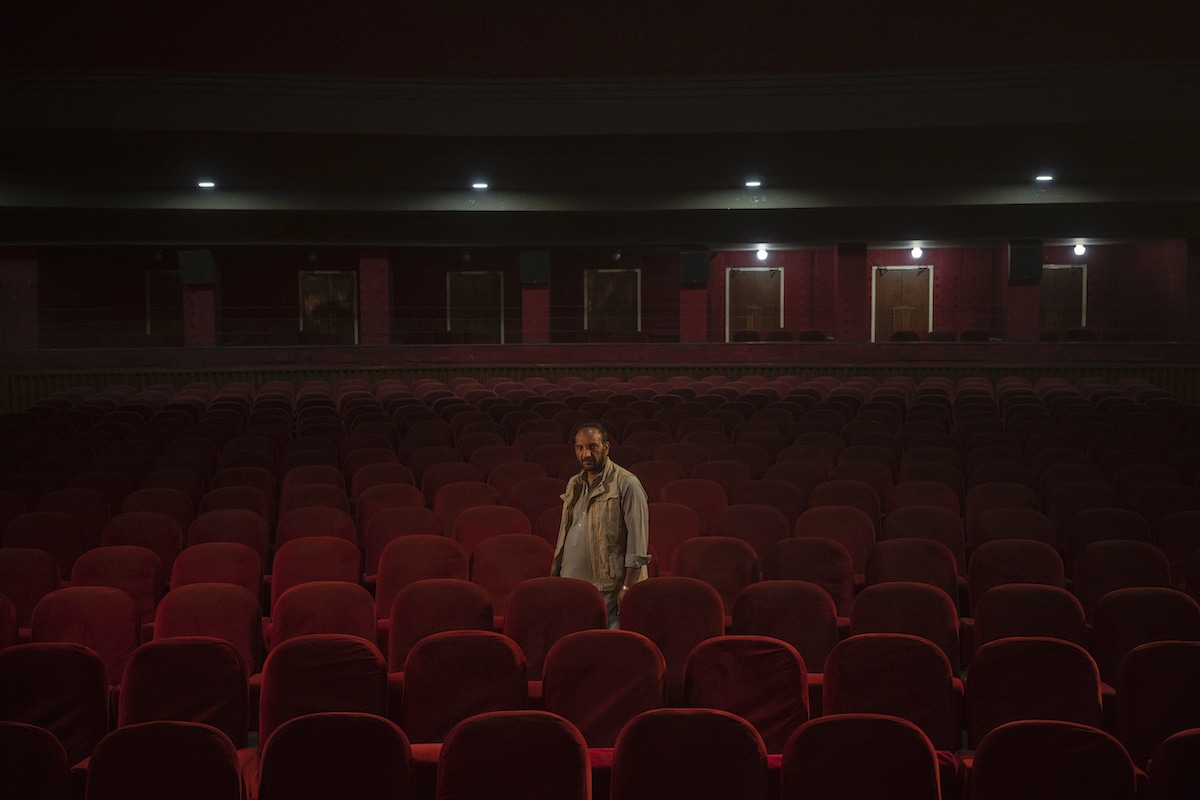
“The Cinema of Kabul” © Bram Janssen, The Associated Press. Winner, Asia, Stories.
“Culture can also be a casualty of war. Following the Taliban takeover of Afghanistan in August 2021, the government-owned Ariana Cinema in Kabul remained closed, its staff in limbo, waiting to hear whether the Taliban would allow films to be screened. Male staff still arrive for work daily, in the hope they will eventually be paid, but Asita Ferdous – the cinema's first female director – was not allowed in. In early 2022, the cinema remained closed, and women were no longer allowed to be employed there..
Gul Mohammed, who works as an usher in the Ariana Cinema in Kabul, Afghanistan, poses for a photograph on 4 November 2021, nearly three months after the Taliban closed the cinema.”
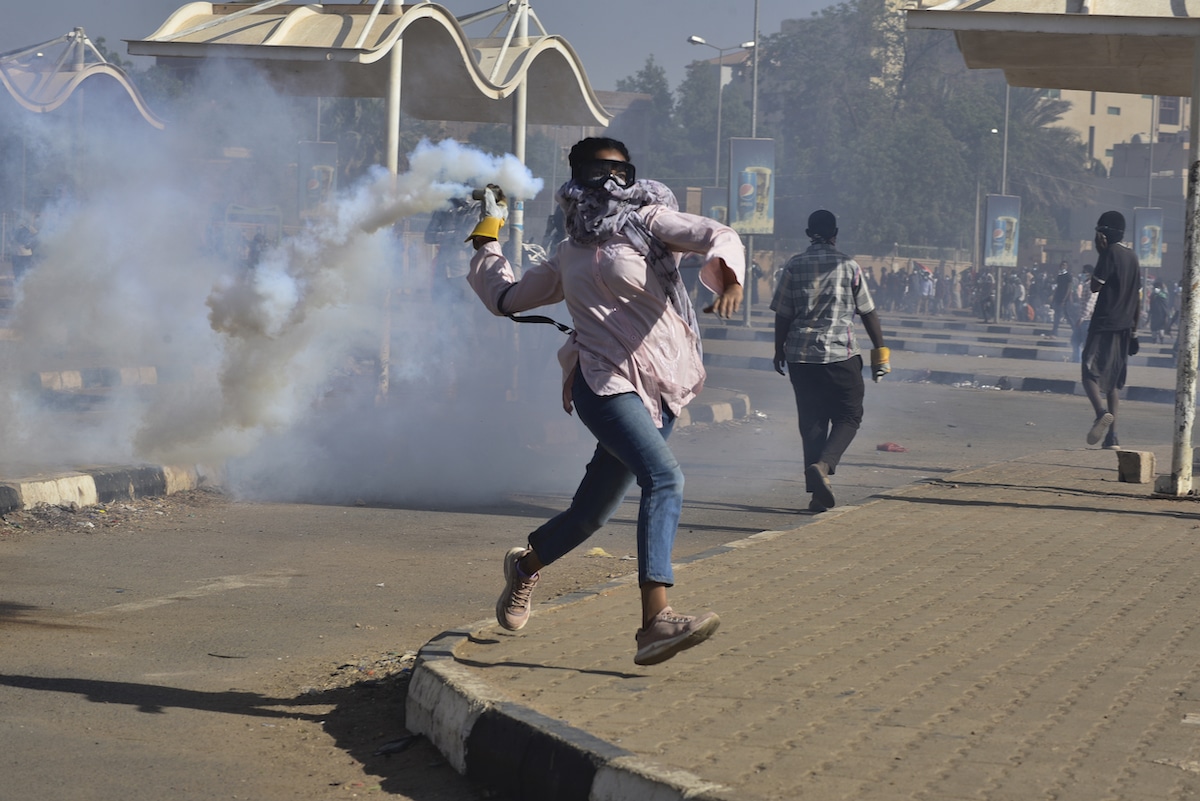
Sudan Protests © Faiz Abubakr Mohamed. Winner, Africa, Singles.
“A protester throws back a tear-gas canister that had been fired by security forces, during a march demanding an end to military rule, in Khartoum, Sudan, on 30 December 2021.”
“Changes that we believe will offer different perspectives on, and a deeper connection to, photojournalism and documentary photography from all over the world.”
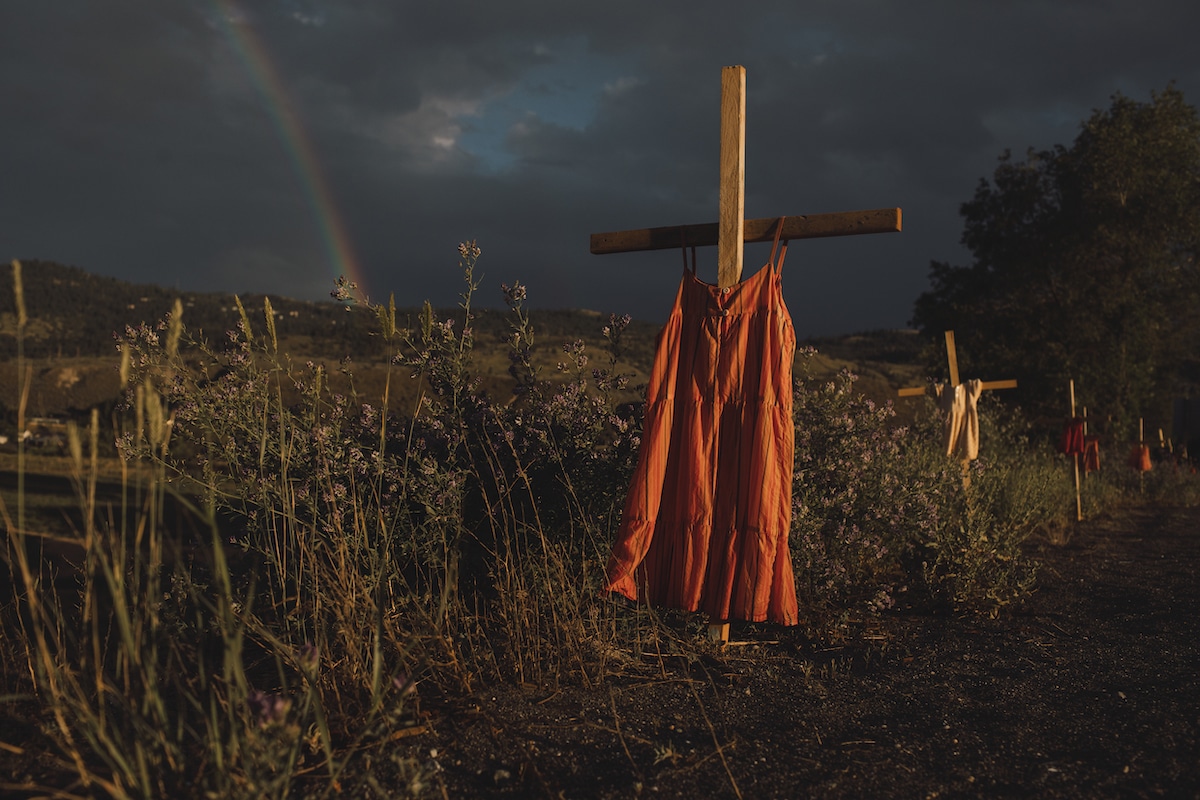
“Kamloops Residential School” © Amber Bracken, for The New York Times. Winner, North and Central America, Singles.
“Red dresses hung on crosses along a roadside commemorate children who died at the Kamloops Indian Residential School, an institution created to assimilate Indigenous children, following the detection of as many as 215 unmarked graves, Kamloops, British Columbia, 19 June 2021.”

“As Frozen Land Burns” © Nanna Heitmann, Magnum Photos. Winner, Europe, Stories.
“People walk along the Buluus glacier, which lies in a deep valley some 100 km from Yakutsk, and is a popular retreat in summer months when temperatures in the capital reach the high 30s Celsius, in Sakha, Siberia, Russia, on 16 June 2021. Permafrost beneath the glacier keeps at least part of it frozen through the summer months, but The Siberian Times reported local scientists as saying that glacial melt in the region has sped up in the past ten years.”

“Amazonian Dystopia” © Lalo de Almeida, for Folha de São Paulo/Panos Pictures. Winner, South America, Open Format.
“A boy rests on a dead tree trunk in the Xingu River in Paratizão, a community located near the Belo Monte hydroelectric dam, Pará, Brazil, on 28 August 2018. He is surrounded by patches of dead trees, formed after the flooding of the reservoir.
The Amazon rainforest is under great threat, as deforestation, mining, infrastructural development, and exploitation of natural resources gain momentum under President Jair Bolsonaro’s environmentally regressive policies. Since 2019, devastation of the Brazilian Amazon has been running at its fastest pace in a decade. An area of extraordinary biodiversity, the Amazon is home to more than 350 different Indigenous groups. Exploitation of the Amazon has a number of social impacts, particularly on Indigenous communities who are forced to deal with significant degradation of their environment, as well as their way of life.”

“Blue Affair” © Kosuke Okahara. Winner, Asia, Open Format.
“Blue Affair is a contemplative experimental documentary film based on the photographer’s experiences of visiting Koza (officially Okinawa City), Japan, and how places and people revisit him in recurring dreams. The documentary is based on these dreams, and is composed of still images taken by Okahara in Koza over the course of three years, and narrated by the photographer. The video explores how the memories infiltrate dreams, and asks us to reconsider the relationship between dreams and lived reality.”











































































